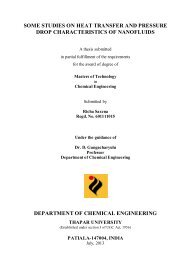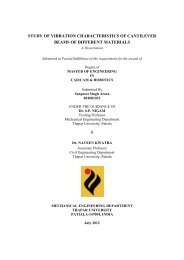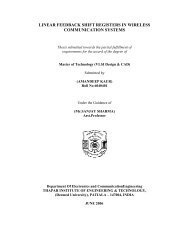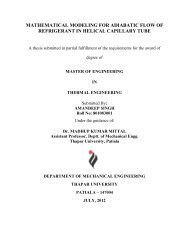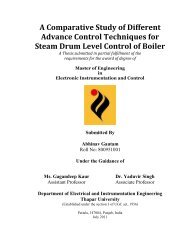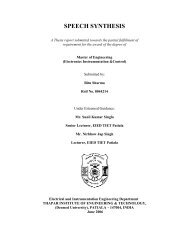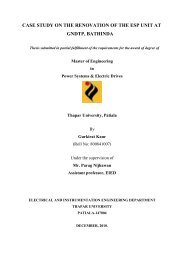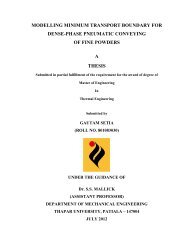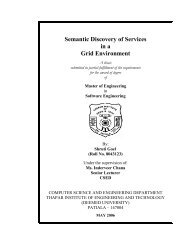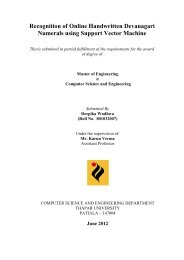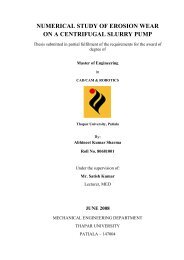from indigenous fermented foods and human gut ... - Thapar University
from indigenous fermented foods and human gut ... - Thapar University
from indigenous fermented foods and human gut ... - Thapar University
Create successful ePaper yourself
Turn your PDF publications into a flip-book with our unique Google optimized e-Paper software.
77<br />
Chapter IV: Results<br />
4.3 Survival after the successive passages through artificial saliva, gastric <strong>and</strong> intestinal<br />
juice<br />
Ninty-four isolates <strong>from</strong> pickle mango, garlic–chilli, Bhaati jaanr, Mahula liquor <strong>and</strong><br />
children’s faeces were screened for their survival under simulated gastrointestinal conditions.<br />
Strains of Lactobacillus casei (LAM-1 <strong>and</strong> LAM-2), Lactobacillus delbrueckii (LKH-2 <strong>and</strong><br />
LKH-3), Lactobacillus helveticus (LKH-5), <strong>and</strong> Lactobacillus fermentum (Lamec-29), with<br />
good gastrointestinal survival were then chosen for further studies of probiotic properties<br />
(Fig. 4.1). All other strains, which did not survive under gastrointestinal conditions were not<br />
investigated further. The viability of the Lactobacillus casei (LAM-1 <strong>and</strong> LA-1M) strains<br />
upon successive passages through artificial saliva <strong>and</strong> gastric duodenum juices is shown in<br />
Figure 4.1 A. Strain LAM-1 showed notable survival (75%) in simulated gastric <strong>and</strong><br />
intestinal transit, whereas 62% LAM-2 cells survived these conditions.<br />
The slight decline in the live counts of Lactobacillus casei strain seemed to be due to<br />
the effect of gastric juice (determined after 1 h incubation with simulated acid gastric juice<br />
<strong>and</strong> before addition of artificial duodenum juice), because in the following stages of<br />
incubation, cell counts did not changes more than approx. 1 log units. Tolerance of L. casei<br />
LAM-1 towards duodenum juice was higher than that of L. casei LAM-2 which was more<br />
sensitive to artificial duodenum juice. Strains belonging to the Lactobacillus fermentum<br />
group showed a low variability in their survival. Some strains presented the best survival<br />
rates in this study, even higher than those observed for the L. casei strains, for e.g., Lamec-29<br />
with 82% survival rate (Fig. 4.1 C). Other strains (results not shown) failed to survive under<br />
simulated gastric <strong>and</strong> intestinal condition, these strains were therefore not chosen for further<br />
studies.



